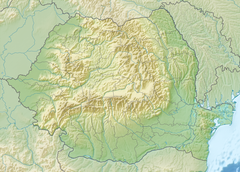결합 알베도
Bond albedo원래 그것을 제안한 미국 천문학자 조지 필립스 본드(1825–1865)의 이름을 딴 본드 알베도(또는 구면 알베도 또는 행성 알베도 또는 볼로메트릭 알베도)는 우주로 흩어진 천체에서 발생하는 총 전자기 방사선의 비율이다.
본드 알베도는 모든 파장과 위상각에서 물체로부터 산란된 모든 빛을 설명하기 때문에, 물체가 흡수하는 에너지의 양을 결정하는 데 필요한 양이다.이것은, 차례로, 물체의 평형 온도를 결정하는 데 중요하다.
태양계 바깥의 물체는 항상 지구에서 매우 낮은 위상각으로 관측되기 때문에, 그들의 결합 알베도를 측정할 수 있는 유일한 신뢰할 수 있는 데이터는 우주선에서 나온다.
위상 적분
결합 알베도(A)는 다음 식으로 기하학적 알베도(p)와 관련이 있습니다.
여기서 q는 위상 적분이라고 하며 위상각 α(모든 파장과 방위각에 걸쳐 평균)에 대한 방향 산란 플럭스 I(α)의 관점에서 다음과 같이 주어진다.
위상각α는 방사선 선원(일반적으로 태양)과 관측 방향 사이의 각도로, 선원 쪽으로 다시 산란된 빛의 경우 0에서 선원 쪽으로 바라보는 관측치의 경우 180°까지 다양하다.예를 들어, 반대편이나 보름달을 볼 때 α는 매우 작은 반면, 역광 물체나 초승달은 180°에 가까운 α를 가집니다.
예
본드 알베도는 가능한 모든 산란광(몸 자체로부터의 방사선은 제외)을 포함하므로 0과 1 사이의 값입니다.이것은 1보다 클 수 있는 기하학적 알베도와 같은 알베도의 다른 정의와는 대조적이다.그러나 일반적으로 본드 알베도는 해당 물체의 표면과 대기 특성에 따라 기하학적 알베도보다 크거나 작을 수 있다.
몇 가지 예:[1]
| 이름. | 결합 알베도 | 시각적 기하학적 알베도 | ||
|---|---|---|---|---|
| 수성.[2][3] | 0.088 | 0.142 | ||
| 금성[4][3] | 0.76 | 0.689 | ||
| 지구[5][3] | 0.306 | 0.434 | ||
| 달[6] | 0.11 | 0.12 | ||
| 화성 [7][3] | 0.25 | 0.17 | ||
| 목성[8][3] | 0.503 | 0.538 | ||
| 토성[9][3] | 0.342 | 0.499 | ||
| 엔셀라두스[10][11] | 0.81 | 1.375 | ||
| 천왕성[12][3] | 0.300 | 0.488 | ||
| 해왕성[13][3] | 0.290 | 0.442 | ||
| 명왕성[14] | 0.41 | 0.51 | ||
| 카론[15] | 0.29 | 0.41 | ||
| 하우메아[14] | 0.33 | 0.66 | ||
| 메이크[14] | 0.74 | 0.82 | ||
| 에리스[14] | 0.99 | 0.96 | ||
「 」를 참조해 주세요.
레퍼런스
- ^ 지구의 알베도
- ^ Mallama, Anthony (2017). "The spherical bolometric albedo for planet Mercury". arXiv:1703.02670 [astro-ph.EP].
- ^ a b c d e f g h Mallama, Anthony; Krobusek, Bruce; Pavlov, Hristo (2017). "Comprehensive wide-band magnitudes and albedos for the planets, with applications to exo-planets and Planet Nine". Icarus. 282: 19–33. arXiv:1609.05048. Bibcode:2017Icar..282...19M. doi:10.1016/j.icarus.2016.09.023. S2CID 119307693.
- ^ Haus, R.; et al. (July 2016). "Radiative energy balance of Venus based on improved models of the middle and lower atmosphere" (PDF). Icarus. 272: 178–205. Bibcode:2016Icar..272..178H. doi:10.1016/j.icarus.2016.02.048.
- ^ Williams, David R. (2004-09-01). "Earth Fact Sheet". NASA. Retrieved 2010-08-09.
- ^ Williams, David R. (2014-04-25). "Moon Fact Sheet". NASA. Retrieved 2015-03-02.
- ^ NASA, Mars Fact Sheet
- ^ Li, Liming; et al. (2018). "Less absorbed solar energy and more internal heat for Jupiter". Nature Communications. 9 (1): 3709. Bibcode:2018NatCo...9.3709L. doi:10.1038/s41467-018-06107-2. PMC 6137063. PMID 30213944.
- ^ Hanel, R.A.; et al. (1983). "Albedo, internal heat flux, and energy balance of Saturn". Icarus. 53 (2): 262–285. Bibcode:1983Icar...53..262H. doi:10.1016/0019-1035(83)90147-1.
- ^ Verbiscer, A.; French, R.; Showalter, M.; Helfenstein, P. (February 9, 2007). "Enceladus: Cosmic Graffiti Artist Caught in the Act". Science. 315 (5813): 815. Bibcode:2007Sci...315..815V. doi:10.1126/science.1134681. PMID 17289992. S2CID 21932253. (지원 온라인 자료, 표 S1)
- ^ Howett, Carly J. A.; Spencer, John R.; Pearl, J. C.; Segura, M. (2010). "Thermal inertia and bolometric Bond albedo values for Mimas, Enceladus, Tethys, Dione, Rhea and Iapetus as derived from Cassini/CIRS measurements". Icarus. 206 (2): 573–593. Bibcode:2010Icar..206..573H. doi:10.1016/j.icarus.2009.07.016.
- ^ Pearl, J.C.; et al. (1990). "The albedo, effective temperature, and energy balance of Uranus, as determined from Voyager IRIS data". Icarus. 84: 12–28. Bibcode:1990Icar...84...12P. doi:10.1016/0019-1035(90)90155-3.
- ^ Pearl, J.C.; et al. (1991). "The albedo, effective temperature, and energy balance of Neptune, as determined from Voyager data". J. Geophys. Res. 96: 18, 921–18, 930. Bibcode:1991JGR....9618921P. doi:10.1029/91JA01087.
- ^ a b c d Verbiscer, Anne J.; Helfenstein, Paul; Porter, Simon B.; Benecchi, Susan D.; Kavelaars, J. J.; Lauer, Tod R.; et al. (April 2022). "The Diverse Shapes of Dwarf Planet and Large KBO Phase Curves Observed from New Horizons". The Planetary Science Journal. 3 (4): 31. Bibcode:2022PSJ.....3...95V. doi:10.3847/PSJ/ac63a6. 95.
- ^ Buratti, B. J.; Hicks, M. D.; Hillier, J. H.; Verbiscer, A. J.; Abgarian, M.; Hofgartner, J. D.; Lauer, T. R.; Grundy, W. M.; Stern, S. A.; Weaver, H. A.; Howett, C. J. A. (2019-03-19). "New Horizons Photometry of Pluto's Moon Charon". The Astrophysical Journal. 874 (1): L3. doi:10.3847/2041-8213/ab0bff. ISSN 2041-8213.




